
Leaf humus is the beautiful, dark brown crumbly stuff you find in the woods.
It’s made of all the leaves that have decomposed over the years — because no one raked them up and trucked them away.
The natural way
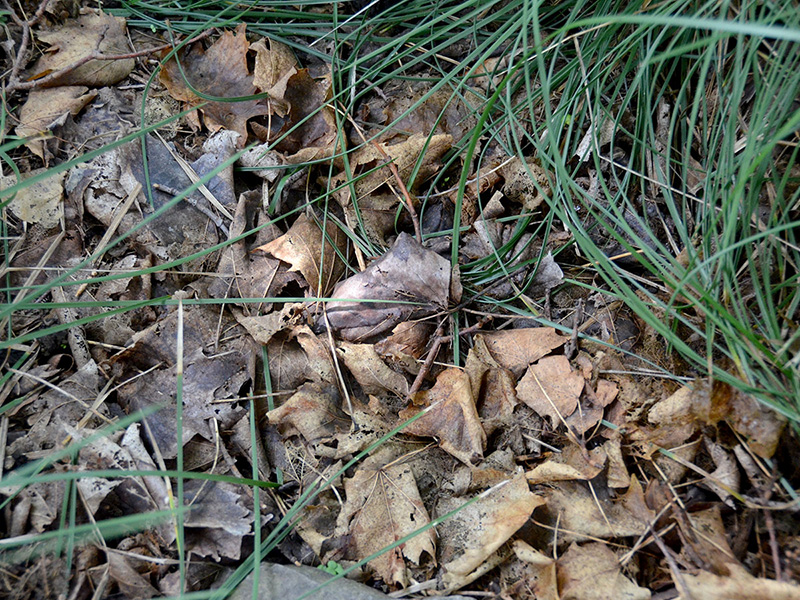
Of course, the easiest way to make leaf humus is the natural way: just let leaves decompose where they land, a practice recommended by environmental organizations.
VERY IMPORTANT: By leaving the leaves, we not only enrich the soil, but we also protect all the creatures overwintering in the leaf litter and provide a rich “hunting ground” for birds.
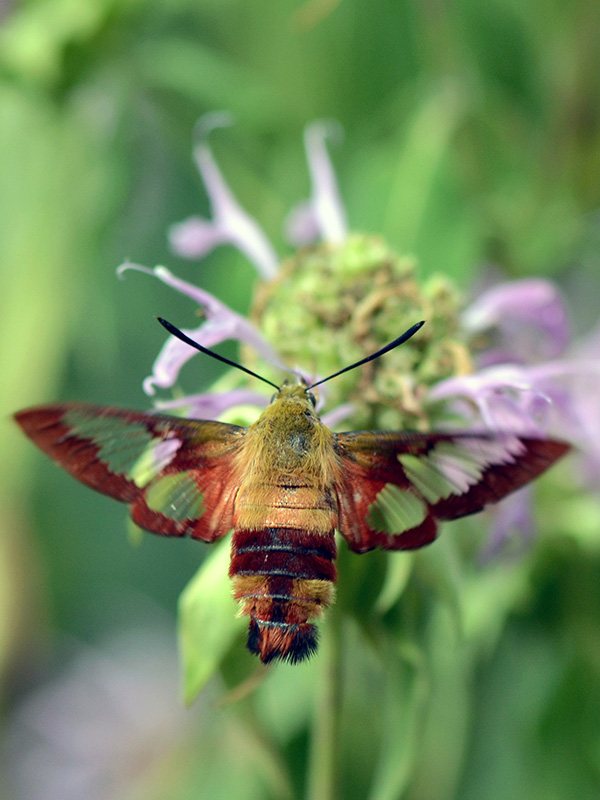
This beautiful hummingbird clearwing moth is an example of what we lose when we throw away the leaves.
As the U.S. Forest Service says, “When they are fully-grown they drop to the ground, spin a loose cocoon and pupate, partially protected by leaf litter. That leaf litter so hated by some gardeners provides a shelter to this beautiful pollinator. In the north, where the season is short there is only one generation per year; the pupa spends the whole winter well hidden and the adult does not emerge until the next spring.”
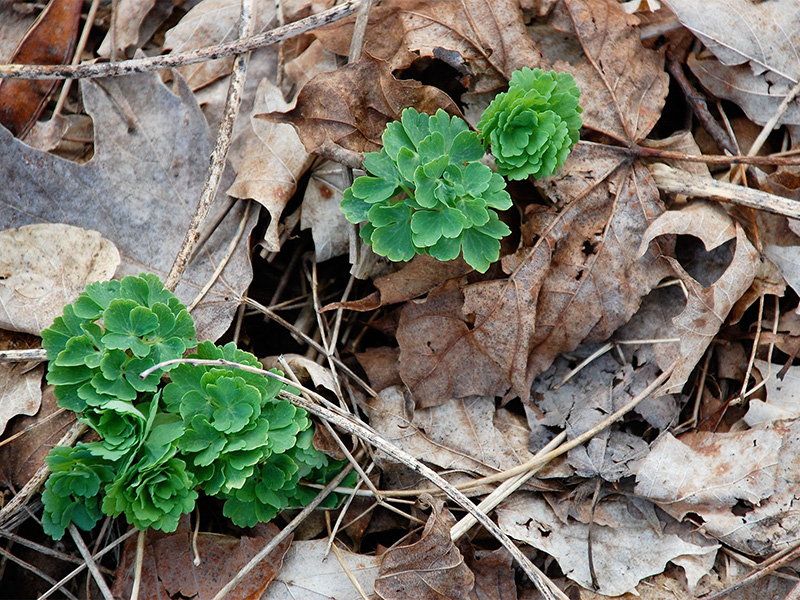
Although young plants or those planted the previous fall might need a little of the leaf cover removed in the spring, plants easily poke their way through the leaves in the spring.
In other words, just as they’d do in the wild!
Leaves on the lawn
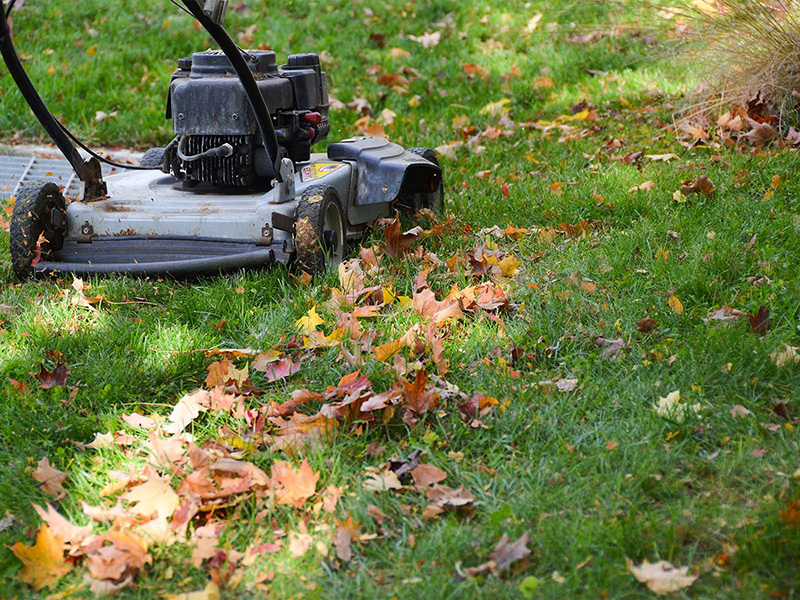
In the past, we sometimes just mowed the leaves that fall on the lawn with a mulching mower and let them stay on the lawn to enrich the soil. Now, we’re concerned that shredding the leaves in this way also shreds whatever little creatures live there. On the other hand, we have such a minuscule lawn, it’s not a big issue.
Some people just dig them right into their garden soil, a process called sheet composting. We’ve never tried this, but it might be good for our edible garden.
Leaves in the community
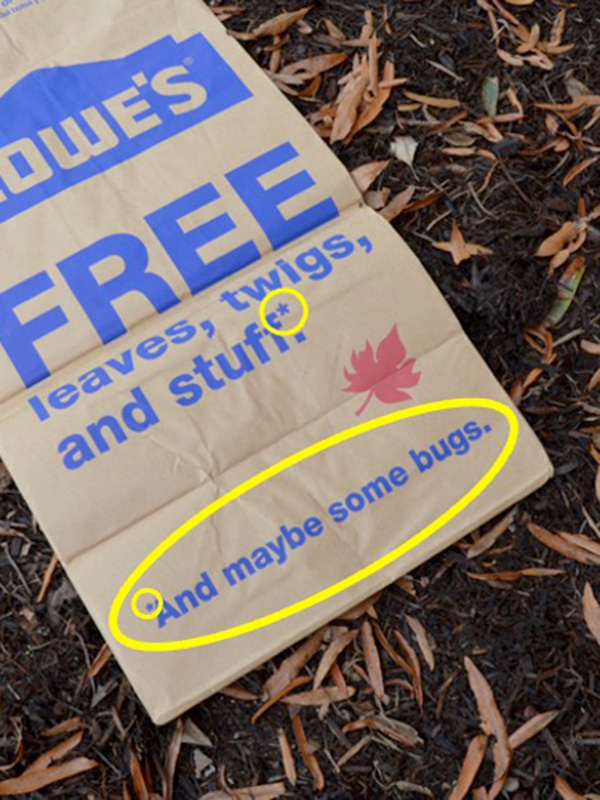
“And maybe some bugs.” Yep.
Maybe lots of bugs. Maybe next year’s butterflies, moths, and other insects important to healthy ecosystems!
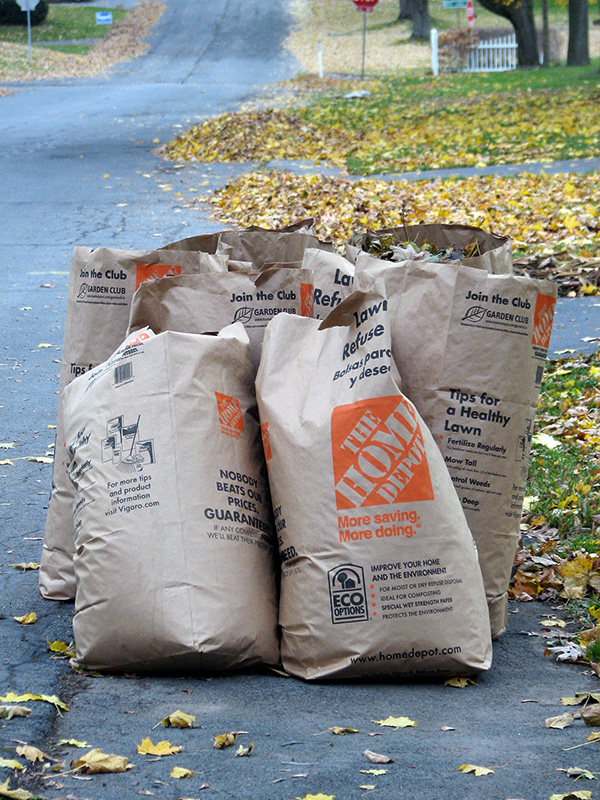
What a waste! Besides leaves, these bags probably also contain overwintering butterfly larvae and other beneficial insects.
And then the next summer people will wonder why there are so few butterflies these days! They’ve thrown them out in the trash!
Our streets are lined with these piles of leaves, many already crushed to fine mulch-like consistency. And they’re waiting to be carted away to the dump.
Come spring, I imagine these homeowners will be going off to the store to buy … mulch! (And here’s a funny story about this…)
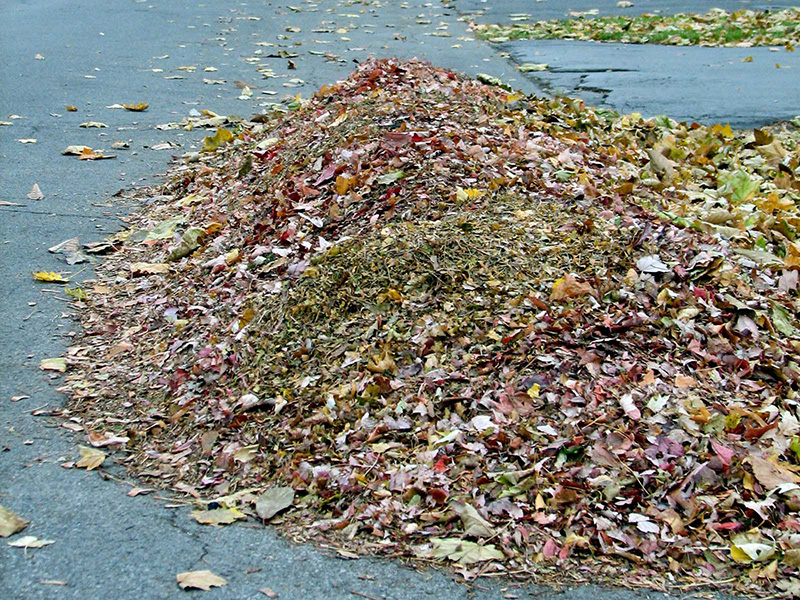
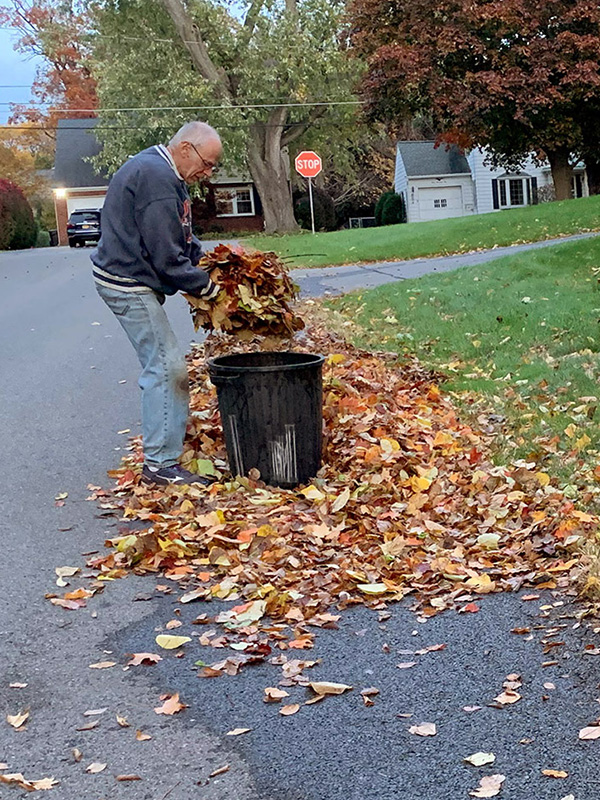
You can’t have too many leaves, so we collect leaves other people put out to the curb before the town collects them.
People even discard pine needles and pine cones laboriously raked from under their trees — things that were meant to decompose under those trees, which were expecting the return of those exact nutrients.
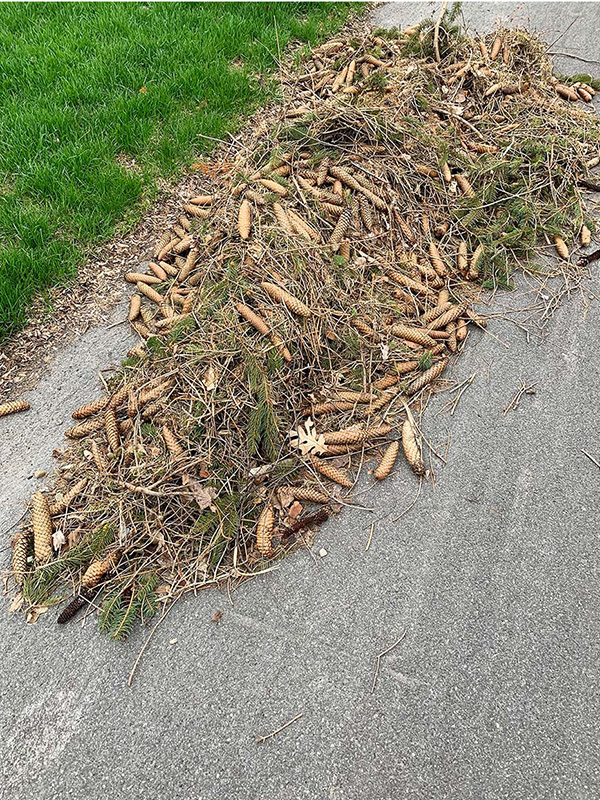
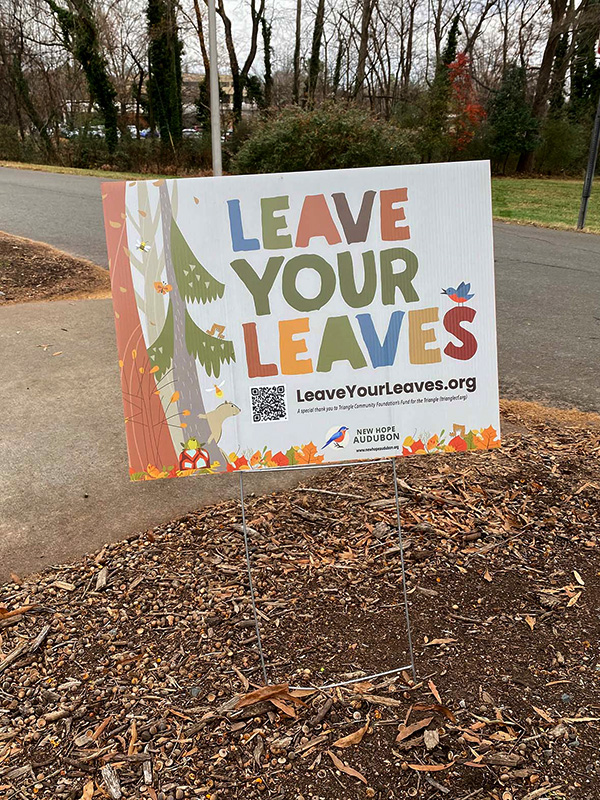
Some communities are on board with this message! This is a sign I saw when we were visiting a park in Chapel Hill, NC.
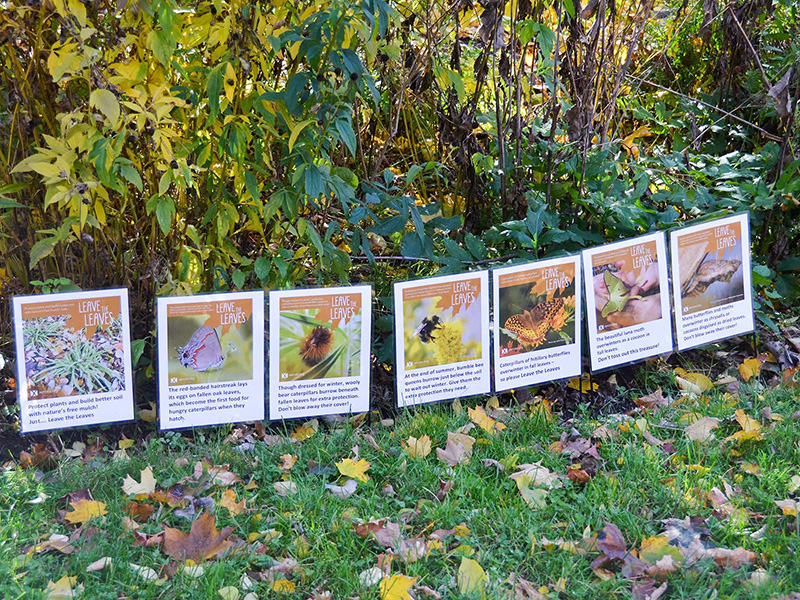
In the fall, we display these signs based on Xerces Society’s signs (at the bottom of that webpage). These signs, which I adapted by repeating the text in large font, can be downloaded.
We’re no longer using a chipper/shredder
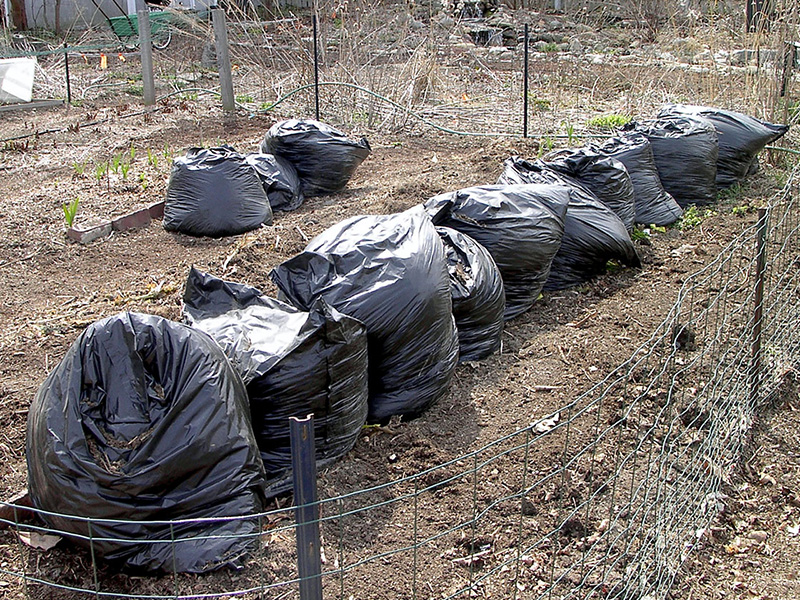
We had previously spent a lot of time shredding leaves and storing them all winter in garbage bags stashed in the permanent paths of our edible garden.
It was tedious, noisy, and polluting work. And now we know we were also shredding overwintering butterflies and moths.
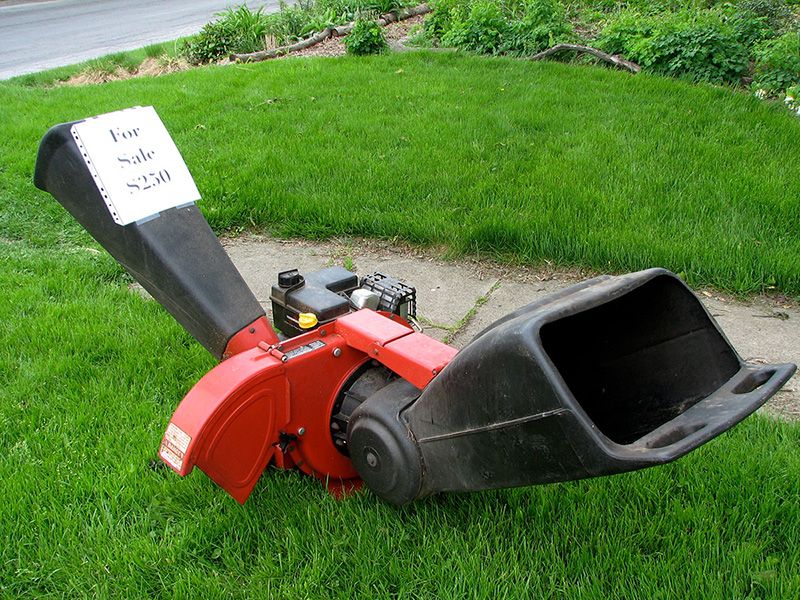
When we discovered how easy it was to just let those leaves decompose, we sold this expensive, but now unnecessary, machine.
Making more leaf compost
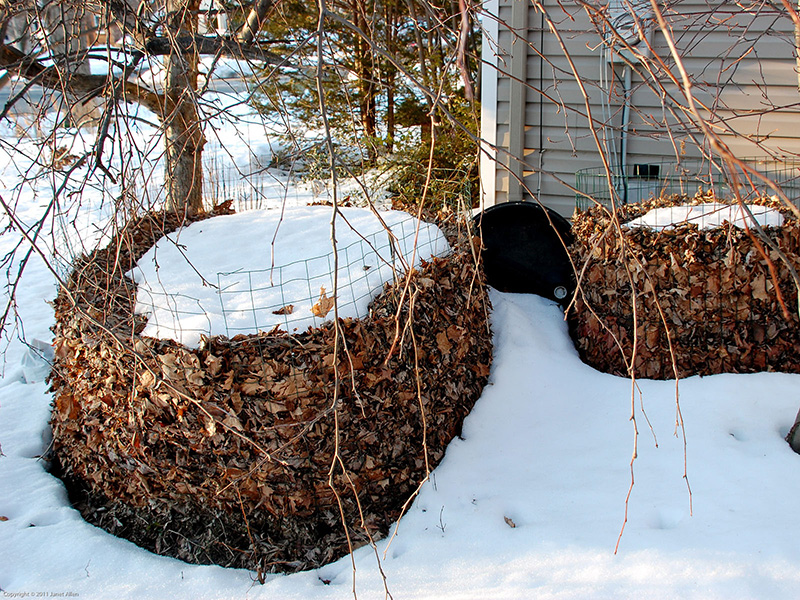
Besides just letting leaves decompose in our garden beds, we intentionally make leaf humus by composting them in bins.
Initially, we used some of our own homemade leaf humus in our woodland areas, especially since we sited them in areas that didn’t have forest-y soil to begin with. (We use the rest in our edible garden.)
The bottom line
We keep all our leaves (and as much of our tree/shrub prunings as possible) in our own yard and never put them out to the curb as waste!
Resources
- Leave Leaves Alone!:
- a NYS organization founded by Master Gardeners and others – includes info on a proposed gas leaf blower ban for NYS
- The Humane Gardener:
- Xerces Society:
- Leave the leaves – a variety of resources on the topic
- Leave the leaves – these invertebrates depend on it
- Put down those pruners – Pollinators need your garden garbage
- Nature Conservancy’s Cool Green Science:
- Wild Seed Project:
- Leave the leaves! – Great ideas for leaves
- Cornell Cooperative Extension:
- Welded Wire Cylinder Bin (a PDF file)
- Audubon New Hope chapter:
- Why you should leave the leaves
- VIDEO: Leave your leaves! – Excellent 8-min. summary of reasons for leaving leaves
- Sue Reed:
- National Wildlife Fed’n:
- Choose Natives:
- American Museum of Natural History:
- Life in the Leaf Litter – a PDF download – Beautiful booklet!
- Westchester County:
- Love ‘Em and Leave ‘Em – a free toolkit this municipality has offered other communities
- Love ‘Em and Leave ‘Em for Homeowners – This mulching-in-place portion of the community-wide program is geared toward homeowners
- Rutgers Coop Ext:
- Fact sheets on composting, including one on “Backyard Leaf Composting” with leaves only and one on “Using Leaf Compost”
- New York Times:
Reflections
We compost leaves and think we know something about making soil. It takes trillions of minute to microscopic organisms of thousands of species to decay to soil those leaves we think we compost.
~ Sara Stein, Noah’s Garden: Restoring the Ecology of Our Own Back Yards, 1993, p. 15
The use of pesticides and other poisons, as well as the introduction of non-native plants, can change the chemistry of the soil, which will eventually affect life in the leaf litter. … In addition to their effects on soil chemistry, the leaf litter produced by these non-native plants may be unpalatable to soil organisms.
~ Life in the Leaf Litter, p. 21
American Museum of Natural History Center for Biodiversity and Conservation
